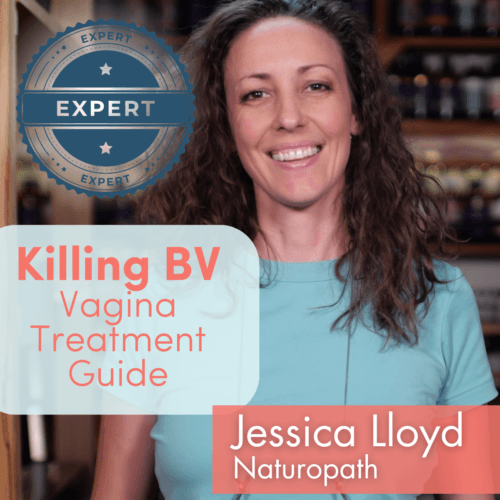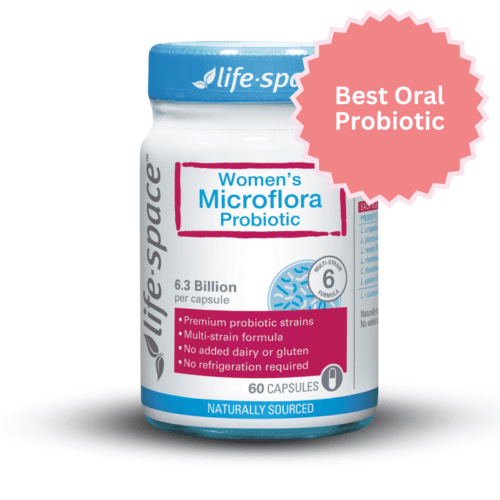Androgen excess is a common endocrine condition, characterised by the ovaries producing excess androgens.1
Androgens are produced by the adrenal glands and ovaries, with fat and skin also playing a role in converting weaker androgens to more powerful ones.
Androgens, when found in excess, can cause hirsutism, male-type features, and problems with the reproductive system.
Acne and oily skin are commonly associated with androgen excess, as is androgenic alopecia – androgen-driven hair loss on the crown, in a male-pattern baldness pattern.
Acanthosis nigricans – velvety pigmentation – on the neck, armpits, and groin can also appear as a marker of insulin resistance.
Virilisation includes male-pattern balding, shrinkage of the larynx, loss of female curves, and an overgrown clitoris (clitoromegaly).
Read more about how androgens work on the female body.
Androgen impact on hair growth – hirsutism
Androgen excess affects the hair follicles (and related structures, known as the pilosebaceous unit (PSU)) and reproductive system.
The PSU secretes sebum, and is where our hair grows from, with three types of hair involved, including the fine fuzz on babies at birth.
Hairs in the groin, armpits, sternum and face are all sensitive to androgens, with the scalp, eyelashes and eyebrows all separate to androgens.
As androgen levels rise, more hairs appear in androgen-sensitive areas. This extra hair growth is hirsutism.
Androgens extend the growth phase of hair and conversion from normal head-hair type (vellus) to short, coarse, dark and curly types (terminal type).
The excess sebum production caused by excess androgens can contribute to acne. Sebum production increases during the prepubertal period, when dehydroepiandrosterone sulphate (DHEAS), a testosterone precursor, is elevated.
Anyone who is not sensitive to androgens does not have these over-active sebaceous glands and doesn’t develop acne.
How androgens affect the ovaries
Androgen excess is a feature of PCOS, the most common cause of lack of ovulation causing infertility. Theca cells in the ovaries increase androgen production due to increased LH levels, and also often, increased insulin levels. The PCOS chain of events results in excess androgens due to insulin resistance. Insulin binds to the insulin-like growth factor-1 (IGF-1) receptor, and insulin mimics the action of IGF-1. This increases androgen production by the theca cells in response to LH. Insulin decreases SHBG, increasing free testosterone levels. 2,3
Who gets androgen excess?
In the United States, it is estimated that about eight per cent of the population has androgen excess. Androgen excess is heavily linked with insulin resistance, high blood pressure, lipid disorders and thus cardiovascular disease. Insulin resistance is linked with type II diabetes. Androgen excess occurs across all groups of humans equally, with congenital adrenal hyperplasia (CAH) more prevalent amongst Ashkenazi Jews.4 CAH appears in both sexes equally. Most androgen excess conditions begin to appear in early adolescence or when a woman tries to become pregnant.
Causes of androgen excess in biological females
The most common causes of androgen excess include: 5
- Polycystic ovarian syndrome (PCOS)
- HAIR-AN syndrome (a subset of women with PCOS)
- Ovarian hyperthecosis (where the thecus cells in the ovaries overproduce androgens)
- Congenital adrenal hyperplasia (CAH)
- Cushing syndrome
- Androgen secreting tumours
Polycystic ovarian syndrome (PCOS)6
PCOS is the most common cause of excess androgens in biological females and the most common endocrinological condition that affects fertile-age women.
Prevalence is up to seven per cent of all women, and is increasing. Seventy per cent of women with PCOS have mildly elevated free testosterone, and up to 30 per cent have mildly elevated DHEAS.
Find out more about PCOS and how to manage symptoms here.
HAIR-AN syndrome – hyperandrogenism, insulin resistance and acanthosis nigricans
HAIR-AN syndrome appears in some women with PCOS, that is combined with excess androgens, insulin resistance, acanthosis nigricans, and obesity due to the absence of an insulin receptor defect.
Up to three per cent of women with PCOS have HAIR-AN syndrome. This syndrome is characterised by high levels of post-glucose challenge insulin levels that can reach 300-500µU/mL.
Ovarian hyperthecosis
PCOS is also linked with ovarian hyperthecosis in perimenopausal women.7 The luteinised theca cell nests are present in the ovarian stroma, producing a more severe form of androgen excess and virilisation, with testosterone levels much higher than PCOS.
Free testosterone may reach levels over 200 ng/dL.
Congenital adrenal hyperplasia
About two per cent of women with androgen excess have late-onset nonclassical congenital adrenal hyperplasia.
CAH is a collection of congenital defects that occurs due to gene mutations.
Cushing syndrome (hypercorticism)
Cushing syndrome, while rare, is a cause of androgen excess.
Increasing levels of cortisol or exogenous glucocorticoids cause rapid central weight gain (central obesity, ‘moon face’), stretch marks (striae), hirsutism, acne, and baldness.
The most common cause of Cushing syndrome is glucocorticoid therapy but doesn’t appear to be associated with increased androgens, where Cushing syndrome is associated more often with hirsutism.
An ACTH-secreting pituitary tumour could be causing Cushing syndrome, which is then called Cushing disease.
Some cases of Cushing syndrome were found to be related to autonomous cortisol secretion by the adrenals.
An adrenal tumour can cause quick-onset Cushing syndrome-type symptoms, combined with hirsutism.
More rarely, Cushing syndrome could be caused by another type of tumour that is secreting ACTH.
Androgen-secreting tumours
A tumour on an ovary or adrenal gland could potentially secrete androgens, which can mimic PCOS but with sudden onset of symptoms.
Symptoms often look like Cushing syndrome and virilisation.
Hyperprolactinaemia
High prolactin levels can be found in up to six per cent of women presenting with hirsutism, but we’re not sure what the link is between elevated prolactin and excess androgens.
Read more about hyperprolactinaemia.
Pregnancy
Testosterone levels increase during pregnancy, hitting top levels of about 600-800ng/dL by the end of a full-term pregnancy.
SHBG increases and the placenta aromatises androgens into oestrogens, which has a protective effect on the mother and the foetus.
If aromatase enzymes are deficient in the placenta, the mother and foetus can both end up with virilisation.
Exogenous (environmental) androgens
Androgens or things that have an androgen-like effect from the environment can occur, causing symptoms of androgen excess.
Anabolic steroids are one such example.
Diagnosis and treatment of androgen excess
Those presenting to a doctor with hirsutism should have hormone testing performed since, while most women presenting with hirsutism will have a diagnosis of PCOS, there is the possibility of tumours.
Delays in diagnosis can result in irreversible virilisation and be life-saving. The tests that should be performed include:
- Total testosterone: if it’s PCOS, values between the upper limit of the normal range and 2ng/dL (8.92nmol/L) are consistent with PCOS, but total testosterone levels over 2ng/dL (8.92nmol/L) suggest a virilising ovarian tumour or hyperthecosis. Not all women with PCOS will have elevated total testosterone.
- DHEAS: DHEAS is secreted only by the adrenal glands, so if it’s elevated, it’s a solid marker for adrenal androgen production. DHEAS is commonly elevated in women with PCOS. DHEAS above 700ng/dL (7µg/ml, 18umol/L) can indicate an adrenal tumour.
- 17-hydroxyprogesterone: serum testing of 17-hydroxyprogesterone is a screening test for nonclassic CAH. Enzyme defects result in increases in 17-hydroxyprogesterone. A result under 200 ng/dL (6.05nmol/L) should be followed up with a corticotropin stimulation test.
- Thyroid-stimulating hormone (TSH): subclinical thyroid dysfunction can cause anovulation and menstrual cycle irregularities.
- Prolactin: excess prolactin may be elevated in women with hypothyroidism. If prolactin is high but thyroid function tests are normal, investigations should be made of the pituitary to rule out a tumour.
Other tests may include scans, tests for diabetes, cortisol levels, ACTH, and others.
Treatments and outcomes for androgen excess conditions8–10
The treatment naturally depends entirely on the cause of androgen excess.
If your diagnosis is PCOS, typically the standard medical ‘treatment’ is to put the patient onto the oral contraceptive pill.
The pill causes a reduction in symptoms because it blocks the ovaries from producing androgens (and blocks ovulation), but it does not treat the underlying cause or address the insulin resistance that goes with PCOS.
PCOS and PCOS symptoms can be managed using diet and some key supplements. Fertility concerns should be addressed with your practitioner.
Read more about managing PCOS and PCOS symptoms here.
If you have a tumour, the tumour may be treated or removed surgically. Anyone with serious disease will be referred for specialist treatment.
Psychological care may be recommended.
Most androgen excess conditions are lifelong and must be managed as such.
Medication for androgen excess in women may include:
- Antiandrogens
- Corticosteroids
- Selective aldosterone antagonists
- 5-alpha-reductase inhibitors
- Gonadotropin-releasing hormone antagonists
- Insulin-sensitising medication
- Topical acne treatments
- Dopamine agonists (antiparkinson agents)
References
- 1.Elhassan YS, Idkowiak J, Smith K, et al. Causes, Patterns, and Severity of Androgen Excess in 1205 Consecutively Recruited Women. The Journal of Clinical Endocrinology & Metabolism. Published online January 12, 2018:1214-1223. doi:10.1210/jc.2017-02426
- 2.Ehrmann DA, Rosenfield RL, Barnes RB, Brigell DF, Sheikh Z. Detection of Functional Ovarian Hyperandrogenism in Women with Androgen Excess. N Engl J Med. Published online July 16, 1992:157-162. doi:10.1056/nejm199207163270304
- 3.Astapova O, Minor BMN, Hammes SR. Physiological and Pathological Androgen Actions in the Ovary. Endocrinology. Published online March 26, 2019:1166-1174. doi:10.1210/en.2019-00101
- 4.Weintrob N, Eyal O, Slakman M, et al. The effect of CAG repeats length on differences in hirsutism among healthy Israeli women of different ethnicities. Lobaccaro JMA, ed. PLoS ONE. Published online March 27, 2018:e0195046. doi:10.1371/journal.pone.0195046
- 5.Azziz R, Sanchez LA, Knochenhauer ES, et al. Androgen Excess in Women: Experience with Over 1000 Consecutive Patients. The Journal of Clinical Endocrinology & Metabolism. Published online February 2004:453-462. doi:10.1210/jc.2003-031122
- 6.Wang K, Li Y, Chen Y. Androgen excess: a hallmark of polycystic ovary syndrome. Front Endocrinol. Published online December 13, 2023. doi:10.3389/fendo.2023.1273542
- 7.Hirschberg AL. Approach to Investigation of Hyperandrogenism in a Postmenopausal Woman. The Journal of Clinical Endocrinology & Metabolism. Published online November 21, 2022:1243-1253. doi:10.1210/clinem/dgac673
- 8.Pucci E, Petraglia F. Treatment of androgen excess in females: Yesterday, today and tomorrow. Gynecological Endocrinology. Published online January 1997:411-433. doi:10.3109/09513599709152569
- 9.Sharma A, Welt CK. Practical Approach to Hyperandrogenism in Women. Medical Clinics of North America. Published online November 2021:1099-1116. doi:10.1016/j.mcna.2021.06.008
- 10.Cussen L, McDonnell T, Bennett G, Thompson CJ, Sherlock M, O’Reilly MW. Approach to androgen excess in women: Clinical and biochemical insights. Clinical Endocrinology. Published online March 29, 2022:174-186. doi:10.1111/cen.14710
Get a fresh perspective with a qualified, experienced vulvovaginal specialist naturopath.
This product has multiple variants. The options may be chosen on the product pageThe most comprehensive vaginal microbiome test you can take at home, brought to you by world-leading vaginal microbiome scientists at Juno Bio.
Easy-to-use BV and AV treatment program.
Promote and support a protective vaginal microbiome with tailored probiotic species.





